We are smack dab in the middle of this unit study; so far, so great! We are spreading this one out into a six-week block, mainly because I am adding in some writing and more regular science each week, so best not to overwhelm us both. The rhythm feels about right. Ancient Egypt has us spellbound with its beliefs, religions, superstitions and ways of life. Here are the resources being used to teach and learn:
Today we finished reading The Golden Goblet by Eloise Jarvis McGraw. I read the book aloud, some days just one chapter, others five or more if the action was suspenseful! Reading the last few words today was both gratifying and markedly disappointing - because the story had ended. There weren't any more pages! It is a masterful tale woven with the days of Ancient Egypt and the life of a young boy who wishes more than anything to be apprenticed to a goldsmith. Ranofer's wish is not to be granted after his father dies suddenly and his older half-brother, Gebu, comes to claim him. From that point on Ranofer's life is one of misery - he barely has enough food to eat, is driven to work hard and is often at the mercy of his horrible half-brother's angry fist. Gebu is hording a treacherous secret and Ranofer soon stumbles onto Gebu's secret life - and from there the plot takes off! It's a Newberry Honor book. We came away with a more thorough understanding of the beliefs of Ancient Egyptians. There were a few times I wished I could reach into the book to warn Ranofer of impending danger, or to tell him that khefts (night spirits from the tombs) are not real. Poor boy. My heart really went out to him. This book does deal with physical abuse - not graphically, but enough to illustrate how tough Ranofer's life is and what he has to overcome. This book is probably better suited to middle schoolers, but once we got started, Max really became involved in the story, too. I glossed over some things (you can do this when you read aloud!) to gentle it down a bit.
This book was read aloud during the first week of the unit study. It's about a boy named Senmut who is sent to work in the Nubian gold mines for accidentally killing a dove, a bird considered sacred. Don't worry - Senmut is a survivor and the story works out for him in the end. Choosing books like this help to add a contextual framework to what you are studying - and Max can relate to Senmut because they are about the same age.
Jill Rubalcaba, author of A Place in the Sun, also wrote a book for National Geographic. Warning: it contains pictures of real unwrapped mummies! There is an interesting section on Zahi Hawass, head of the Supreme Council of Antiquities in Egypt. He is an archaeologist trying to save Egyptian relics from destruction due to pollution and other environmental causes. He is also trying to bring stolen artifacts back to his country from all over the world. Did you know that the moisture from tourist's breath inside the pyramids causes 3/4 of an inch of salt to build up on the walls?
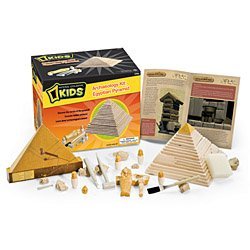
Thames and Kosmos Archaeology Kit: Egyptian Pyramid from National Geographic. This was time well-spent. The pyramid is soundly built and it takes a bit of oompf to dissect into it. Before you can wield the chisel and hammer, though, you must decipher the hieroglyphics written around the pyramid to figure out where the entrance is! The accompanying guide-book is full of interesting facts about Khufu's (Cheops) Great Pyramid; since Khufu's mummy has never been found, NatGeo took some historical liberties and placed King Tut's sarcophagus into this kit, along with some canopic jars. Max took a step backwards when he finally unearthed the sarcophagus and we opened it - inside is a tiny wrapped replica of a mummy! He didn't like that, so I had to put it back into its resting place. King Tut's nose took a beating, too, from Max's chisel. Oops. This kit makes for an interactive and engaging few hours as you work through the instructions and the text. Plus there is a 3-D model of the chambers inside the pyramid so you can have a better understanding of how it was laid out and why. It's messy and fun. Here are some pictures of Max absorbed in his archaeological dig in the Great Pyramid of Giza!
Deciphering the hieroglyphics
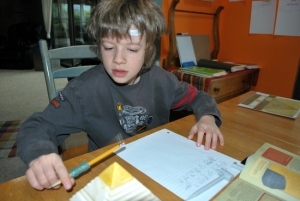
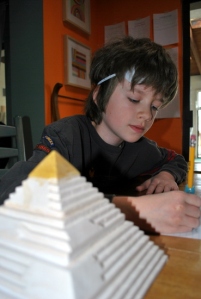
Finally, I can start hammering!

Nice that they provide aviator goggles for the task.
"I'm in. Careful now......."
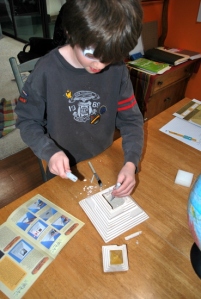
"The sarcophagus accidentally lost its nose due to an errant hammer blow. Oops."
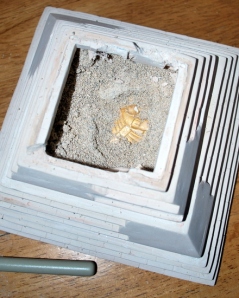
This is the part that grossed Max out. He did not care for the mummy, probably because it looks so real.
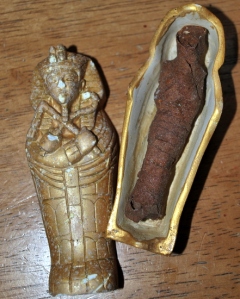
The canopic jars. Has anyone seen my liver?"
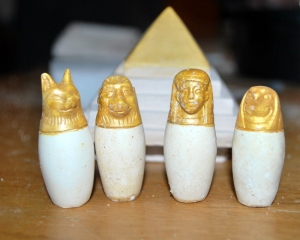
This kit has been all stored neatly away on a shelf. Maybe someday we can take the mummy out again and look at him!"
Am liking this reference a lot. You can make papyrus boats from bendy straws, shabtis from soap, a piece of papyrus using flour, water and strips of paper* along with some berry ink, mud bricks, bread and date candy (who can pass that up?), amulets, a kohl pot, a pharaoh's crook or flail, perfume, and the list goes on........plus it's packed with information and neat facts. One-stop shopping, pretty much. This may become a permanent fixture on the bookshelf. Here's an example page:
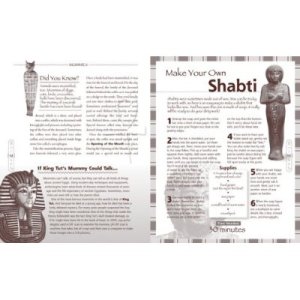
*We made papyrus using the flour and water recipe - it was ooey and gooey.
Surely there are better videos/DVD's out there for learning about Ancient and present-day Egypt. We tried two that, in my opinion, aren't worth watching. Maybe you can find better ones at your library. These are the two that weren't so grand:
This one does have some merit - it gives you a good glimpse into present-day Egypt. The city of Cairo is a sprawling mass of people (some 10 million); drastically different than the quieter farming villages and cities of Ancient Egypt.
This DVD, on the other hand, is worth a look-see. You'll have a honed appreciation of Egyptian feats of engineering - and also of how egocentric those pharaohs were. The era of Hatsheptsut, the woman pharaoh, is intriguing. She had a mighty ego as well.
This entire series is a keeper. Look them up and see if you can find them at your library. Funny stuff, historically accurate.
During the mummification process, the Ancient Egyptians didn't see a use for the brain, so they tossed it out.
There is a theme that we are running across as we read about some historical figures such as Archimedes or Jean Francois Champollion - and that is how DEDICATED and DRIVEN they were to seek answers to questions. Archimedes couldn't be bothered to bathe, change his clothes, let alone eat. He was too immersed in his work and his mind was always active, always thinking. Jean Francois Champollion decided at the age of eleven that he would grow up to decipher Egyptian hieroglyphics and by gosh, he did! That's admirable.
by Mary Pope Osborne. This is the accompanying research manual to her book called Mummies in the Morning. It's good!
Max has a thing for scarabs. We made the scarab project using plaster of paris (the nontoxic kind) and engraved hieroglyphics on the back side so they could be used with a rubber stamp pad to make an official seal.
Wonderful, colorful art in this book.
Chapter one got read today. A time travel book involving kids and Ancient Egypt. Looks to be a suspenseful read.
Spelling and Vocabulary Words for the Unit
shabtis, shentis, silt, flooding, cartouche, Cairo, barge, climate, fertile, amulet, civilization, Egyptologist, tributaries, archaeologist, domestication, papyrus, Sahara Desert, Nile River, oasis, arid, garlic, scarab, Ramses, downstream, Thebes, linen, hyena, antelope, lotus, obelisk, sphinx, temple, mummy, delta, kneading, hippopotamus, kohl, pharaoh, tomb, pyramid, hieroglyphics, sarcophagus.
That's it. Max announced the other day that he was 'done' with Ancient Egypt. Other than putting some dates on our time line, we're finished.


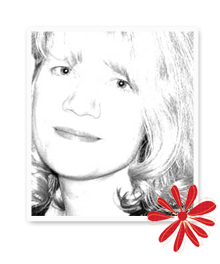











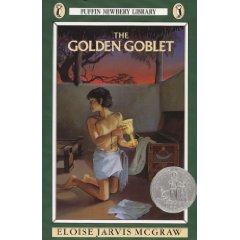
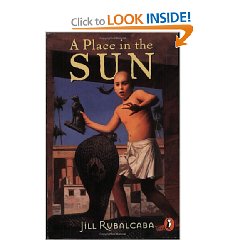
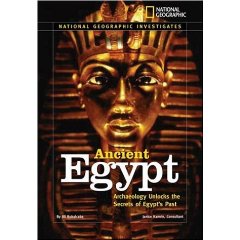

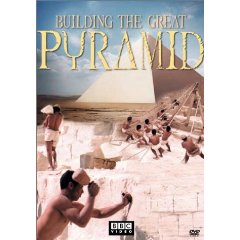
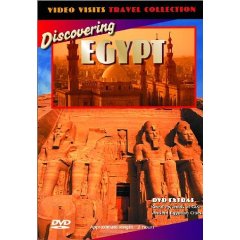
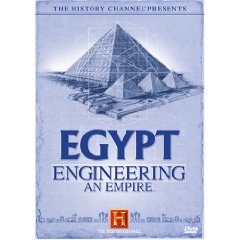
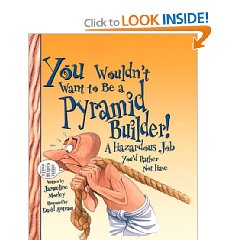
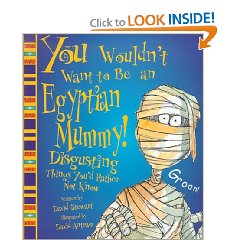
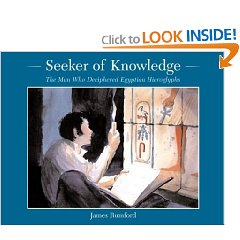
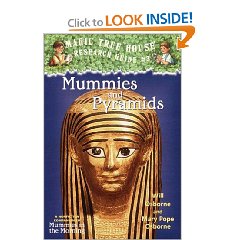

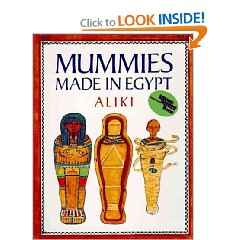
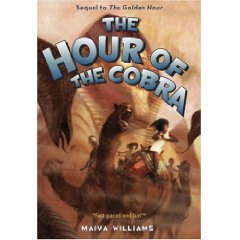




No comments:
Post a Comment